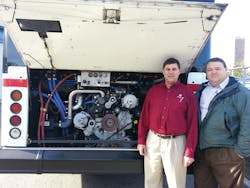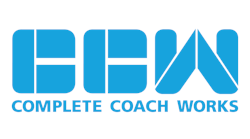Recently I had the opportunity to tour St. Louis Metro’s maintenance facilities and talk with the people who manage the operations. What I found was an enthusiastic staff and streamlined operations dramatically that had been transformed over 10 years. The transformation was in response to three mandates issued a decade earlier by COO Ray Friem: control operating costs, manage life-cycle costs and reduce customer service complaints. How the transformation occurred is an interesting story and the results are striking, but getting those results required data.
To quote my friend Ed, a process improvement engineer, if you can measure something you can improve it. Using this maxim as their guiding principal, Metro now runs a fleet of more than 400 vehicles with an average service life that exceeds the federal mandate by three years. Instead of being in service 12 years, vehicles will run 15 years before being sold, greatly reducing capital costs. How do they do it? Throughout the entire service period, every component has a defined service and replacement interval calculated by ongoing data analysis. Carl Thiessen, chief mechanical officer, credits the success to careful attention to details and ongoing recalibration, noting that even a warning light is a sign that intervals need to be reexamined to head off a component reaching the warning stage.
As a result of the process improvement efforts, costly road calls are rare at Metro. In 2000, mean distance between failures was 4,000 miles. Now the mean is approaching 25,000 miles. Customer complaints have plummeted, from 180 per year to about 20. With 1 million riders per week and more than 50 million a year, Metro certainly has achieved their mandate to reduce customer complaints.
On the day of my visit to Metro, Complete Coach Work’s Macy Neshati was turning over the keys to a bus powered by Navistar’s Maxxforce engine. This is the first Maxxforce engine in revenue service and Metro was chosen to launch it. CCW is expecting Metro to monitor every metric and confirm that the bus and engine meet their expectations for reduced emissions, fuel economy, power and more. Carl mentioned earlier they even know how many cycles the starter buttons have in their fleet, so the engine is sure to get close scrutiny.
The real takeaway from my day at St. Louis Metro is that Carl and his crew are getting enormous satisfaction from their jobs. The crew is not shy about admitting how bad things were 10 years ago and accepting responsibility for some of the problems. Now they have created the tools and knowledge for success, and can take credit for the accomplishments. They didn’t have to tell me how pleased they were — I could see it. And their candor and enthusiasm made for a really interesting visit.




